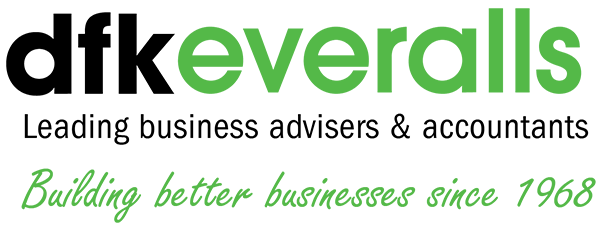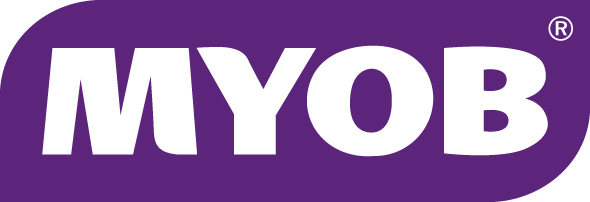The legislation has finally been passed for “Payday Super” reforms, which take effect from 1 July 2026. This results in a significant shift in how employers pay superannuation contributions. Under the “Payday Super” reforms, employers will no longer make super contributions quarterly; instead, they will make super contributions alongside wages (i.e., on payday).
The aim is to reduce unpaid or underpaid super, promote transparency, and help employees receive their retirement savings earlier.
Below is a practical overview of what the reforms propose, what’s changing, and what employers (and their advisers) should be doing now.
Key Features of the Proposed Reform
Here are the main elements of the Payday Super proposal (as per current drafts and ATO guidance). Note: these are not yet law, and some details remain under consultation.
| Feature | Proposed Change | Implication / Notes |
|---|---|---|
| Timing of super contributions | Must be paid when wages/salary are paid (i.e. “on payday”) | Super will need to be treated more like a contemporaneous liability rather than a deferred quarterly one. |
| Due date for receipt of funds | Contributions must reach the employee’s super fund within seven business days of payday (changed from prior drafts that mentioned seven calendar days). New employees and first time payments to new super funds for existing employees will have 20 calendar days. | Employers will need to carefully manage timing, clearinghouses, payment processing, and other aspects to meet this window. |
| Super guarantee charge (SGC) update | The SGC framework will be revised to match the new regime (e.g. interest, penalties, remissions) | Employers who delay or underpay may face stricter consequences under the new model. |
| Qualifying Earnings (QE) | Introduces the concept of QE (which closely mirrors “ordinary time earnings”) as the base for SG contributions under Payday Super | Employers will need to validate and map pay codes and categories to QE correctly. |
| Super fund allocation/returns | Funds must allocate or return unallocated contributions within three business days (down from 20) | This puts performance pressure on super funds and administrators to speed up processing. |
| Reporting & data requirements | Employers will need to report both the QE field and the super liability via Single Touch Payroll (STP). | Payroll systems must be upgraded; data validations will become more critical. |
| Closure of Small Business Superannuation Clearing House (SBSCH) | From 1 July 2026, new users (and later all users) will be phased out of the SBSCH service | Small businesses will need to migrate to alternative payment/clearing services. |
| Real-time payments / NPP | The ATO has approved the New Payments Platform (NPP) for super payments; super funds must be able to receive NPP payments from 1 July 2026 | This enables faster, more reliable electronic payments, reducing delays and errors. |
| First-year compliance approach (PCG 2025/D5) | The ATO has published a draft Practical Compliance Guideline (PCG) for the first year (2026–27), aiming to adopt a risk-based approach to enforcement. | Employers making genuine efforts to comply may receive more lenient treatment; however, the timeframe remains tight. |
Why the Change?
Here are the key drivers behind Payday Super:
- Unpaid/underpaid super is a persistent problem. The ATO estimates that $5.2\$5.2$5.2 billion of super was not paid by employers in 2021–22.
- Employees’ money should be invested earlier. Getting super into accounts sooner means longer compounding and shorter idle time in employer bank accounts.
- Transparency and accountability. More frequent payments make it harder for unscrupulous employers to delay or withhold superannuation without detection.
- Better compliance and early intervention. The ATO will conduct more frequent data matching (between employer reports and fund data), enabling faster detection of shortfalls.
- Modern payment infrastructure. Enabling real-time payments via NPP addresses a significant operational barrier to meeting tight timeframes.
What Employers Should Be Doing Now (Even Before 1 July 2026)
Transitioning to a payday super environment is a significant operational change. Below are steps employers (and their business advisers) should be considering now to minimise risk:
Audit current payroll & super systems
- Review whether your payroll software, clearinghouses, or intermediaries can support more frequent super payments, faster processing, and enhanced data fields (e.g., QE).
- Assess whether your current arrangements (batch payments, consolidated fund transfers, or clearing houses) can deliver the required 7-day receipt window.
- Check for any manual or legacy processes that could be bottlenecks.
Engage your technology partners
- Ask your payroll / HR/accounting software providers how and when they plan to support Payday Super.
- Validate that SuperStream/STP interfaces can be upgraded promptly and efficiently.
- Ensure that end-to-end testing with your funds and clearing services will be feasible ahead of go-live.
Cashflow planning
- Since superannuation must be paid essentially contemporaneously with wages, employers must plan for more frequent cash outflows.
- Assess your working capital buffers and determine whether your cash flow model can absorb the change.
- Consider staging or transitional strategies (e.g. making interim super payments earlier) to reduce the adjustment shock.
Data cleansing & mapping
- Review how your payroll codes, allowances, overtime, and other components align with the proposed Qualifying Earnings (QE) base.
- Identify any ambiguous or miscoded payments that might be excluded or disputed under the new regime.
- Begin reconciling super payments against STP data now to identify discrepancies.
Monitor legislative / ATO developments
- The legislation hasn’t been passed yet, so some details remain subject to change.
- The draft PCG (PCG 2025/D5) is open for feedback (deadline 7 November 2025).
Communicate with employees/stakeholders
- Inform employees (and their super funds) about the shift: they will receive contributions more frequently (which is generally positive).
- If you use stapled funds or choice-of-fund arrangements, check how Payday Super affects those rules (e.g. choice/stapling rules are also under consultation)
- Work with your tax / super/financial adviser to coordinate messaging and manage expectations.
Risks & Challenges to Watch
While the reform is broadly supported, it’s not without challenges and criticisms. Some of the key risks and areas of concern include:
- Tight implementation timeframe. Because the reforms are complex, some industry groups argue that employers (especially smaller ones) may not have sufficient lead time to adapt systems.
- Cash flow strain on smaller businesses. More frequent outflows may strain small companies that manage their working capital tightly.
- Payment processing delays. Even if the employer triggers the payment on payday, delays in intermediary systems or across fund processing could cause the 7-business-day deadline to be missed.
- Increased penalty exposure. Under the new regime, the consequences for late payments or shortfalls may be more severe, especially for repeat non-compliance.
- System and administrative burden. Super funds, payroll software vendors, clearing houses, and administrators will face a significant increase in volume, data validation, error handling, and reconciliation workloads.
- Legislative changes. As the reforms are not yet law, some features (e.g. definition of QE, penalty framework, transitional rules) may shift before final passage.
How This Benefits Employees (And Reputationally for Employers)
From the employee perspective, Payday Super offers clear advantages:
- More timely access to their superannuation entitlements
- Less lag between earning and investing (i.e. compounding sooner)
- Increased transparency — employees can more readily verify whether super has been paid with each pay cycle
- Reduced risk of super accumulation in employer accounts, which can be misused or delayed
For employers, while the transition involves effort, there are also reputational benefits in being seen as compliant, fair, and supportive of employee entitlements.
The move to Payday Super is a significant shift in how superannuation is administered in Australia. While still in draft form, the direction is clear: greater frequency, tighter deadlines, and improved compliance and transparency.
Employers should start preparing now by reviewing their systems, payroll programs, and cash flow implications, as well as tracking legislative developments. The first financial year of implementation (July 1, 2026 – June 30, 2027) will be critical — good preparation now means less risk later.
If you would like assistance reviewing the implications for your business, please contact our team.










